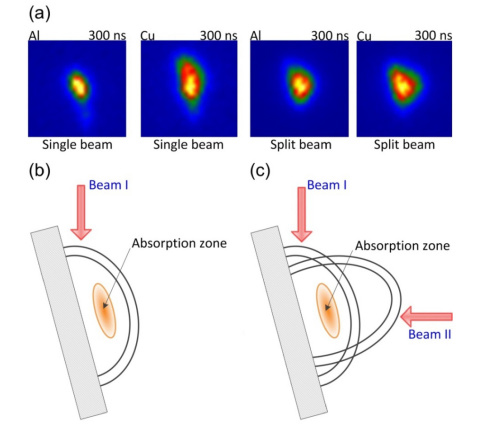A single-beam-splitting approach was employed to enhance the signal intensity of LIBS under the extreme condition of laser beam grazing the surface of non-flat samples. Examining the time-integrated emission spectra shows that I-Split/ I-Single enhancement factors of 2.5 and 3.5 were achieved at the laser energy of 33 mJ for aluminium alloy and brass. respectively. This factor first increases, reaches its maximum at 33 mJ, and drops gradually with the laser energy further increased. Jie Tang’s research team discussed the mechanisms behind the enhanced optical emission and the enhancement factor evolution by using the proposed laser ablation model and laser-supported detonation (LSD) wave model, respectively. Examining the time-resolved emission spectra show that enhancement effect exists across all the plasma expansion process and the split beam mode allows for a longer plasma lifetime. A remarkable feature is that the trailing phenomenon emerging in the single beam mode vanishes due to the interaction between the plasmas generated by the grazing incident and normally incident laser beams in the split beam mode. The underlying cause is probably that the plasma plume produced by the normally incident laser beam prevents the grazing incident laser beam from further propagating and ablating the sample surface below. These findings not only give an insight into the plasma generation and evolution at grazing incidence of laser beam on sample surface but also provide a more reliable method for outdoor LIBS measurement of irregular samples.

(Original research article "Optics Express Vol. 27, Issue 15, pp. 20541-20557 (2019) https://www.osapublishing.org/oe/abstract.cfm?uri=oe-27-15-20541")
Download: